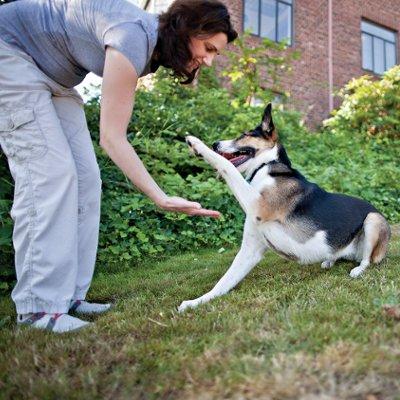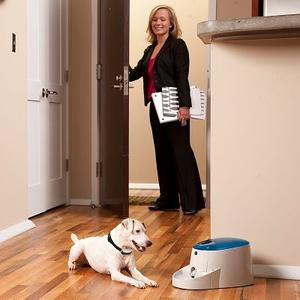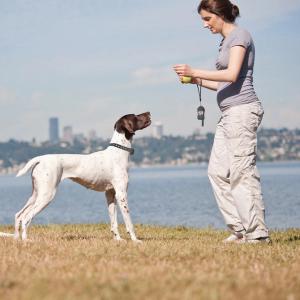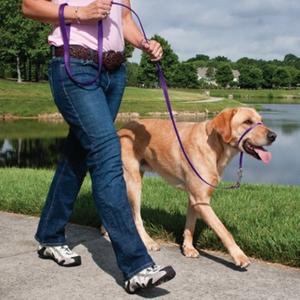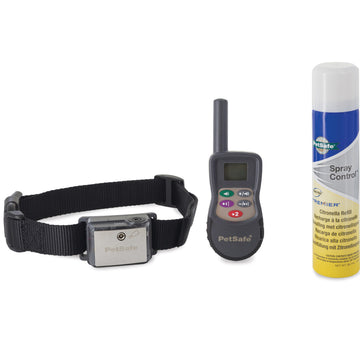Intuitively, we all know that our dogs are like no others. They react hilariously to the most benign and everyday of sounds, or they sleep on their backs trying to copy the humans they watch daily. But, it's not uncommon to totally forget how unique our dogs are when it comes time to do some training. Fittingly, despite some opinions to the contrary, there is no one holy grail method of training. Get to know your dog's personality and you'll have the keys to effective training sessions.
What Makes Your Dog Tick
Most dogs will respond to food for motivation. Think about it like this though: every person that you meet has different preferences, different things they do and do not like doing, and different reward thresholds at which they'd be motivated to do those things. There is a parallel in dogs. Some dogs will accept almost any type of food in return for performing complex tasks or tricks. Others will only hold out for the best. That threshold will vary based on when their last meal was, how long the training session lasts, what they got last time, etc.
Think of the food as a paycheck for the job or task your dog is willing to perform. The harder the task you are asking your dog to do, the better the reward needs to be. Think chicken, liver treats, or cheese.

Don't get frustrated if you've tried lots of different kibble, treats, even chunks of steak, and your dog just doesn't seem to be responding. Try to think about your dog's favorite activity. Many dogs are motivated by play. It just so happens that I have one dog that will do anything for food, and another that will leave behind the most engrossing of distractions if he hears the squeak of his ball. He could be wildly chasing a bird or squirrel and yet the moment he hears that familiar sound, his focus is 100% on me. Think about your dog's favorite toy next time he just doesn't want to work for food.
Always make sure to give verbal positive feedback and petting anytime you are rewarding your pup, whether it be with food or play. By letting them know with your voice and affection that they did the right thing, creating more clear communication, you will enhance your bond with your dog and make the training even more effective.

Is Your Dog Dependent or Independent?
Another key measure to discover is where your dog falls on the continuum between independence and dependence. This is an area where breed can shed some light. For instance, though we think of pulling sleds as a human/dog endeavor, there's relatively little empathy or interaction required for the job. By contrast, retrieving and herding breeds have directly relied for hundreds (if not thousands) of years on visual and verbal cues from humans. Though all dogs are comparative masters at reading our gestures, our voices, our every twitch and smirk, they're not all equal in this skill. So a husky may be somewhat aloof to your body language and tone while a golden retriever almost certainly will not.
Though the more independent breeds may require more work on your part, remember that no dog is a "stubborn dog" per se. If you find yourself getting frustrated, try learning more about the job that your dog's breed has been doing for generations. You'll likely get a shepherd's attention with anything that moves, be it a ball or a tug toy. And a hound will much more likely respond to a tasty or familiar smell.

Confident vs. Submissive
The next thing to consider is whether your dog is confident or submissive. Confident dogs are little more eager to push the bounds to satisfy curiosity or a desire, and so they tend to be faster learners. But this confidence can also make them a bit pushy. For instance, a confident dog may bark for attention, play, or even food. If you want to train your dog instead of letting your dog train you, then you must never reward this type of behavior by appeasement. That does not mean a dog is "dominant." It just means that the dog may need a little bit more clarity and consistency from you. Make sure to follow through with what you ask your dog to do just as you would with a child learning boundaries.

On the other hand, submissive dogs will often exhibit submissive behaviors and go out of the way to avoid conflict. They may become scared or nervous easily and stop accepting treats. When they are pushed to their limits, they may get stiff and show signs of aggression. Keeping things light and fun is essential to succeeding in training. Submissive dogs can benefit immensely from confidence-building activities like agility, playing tug or (link to tug article) doggy daycare. They require a lot of patience, but like any dog, an understanding of their personality will allow you to make real headway in training.
Dogs can't partake in online personality tests, but they don't have to. They tell us quite clearly who they are and what they'll respond to. As owners it's our responsibility to pay close attention and get to know our companions and respect that every dog is unique. The more we take the time to understand our dogs, the easier the training gets and the better the relationship becomes.

